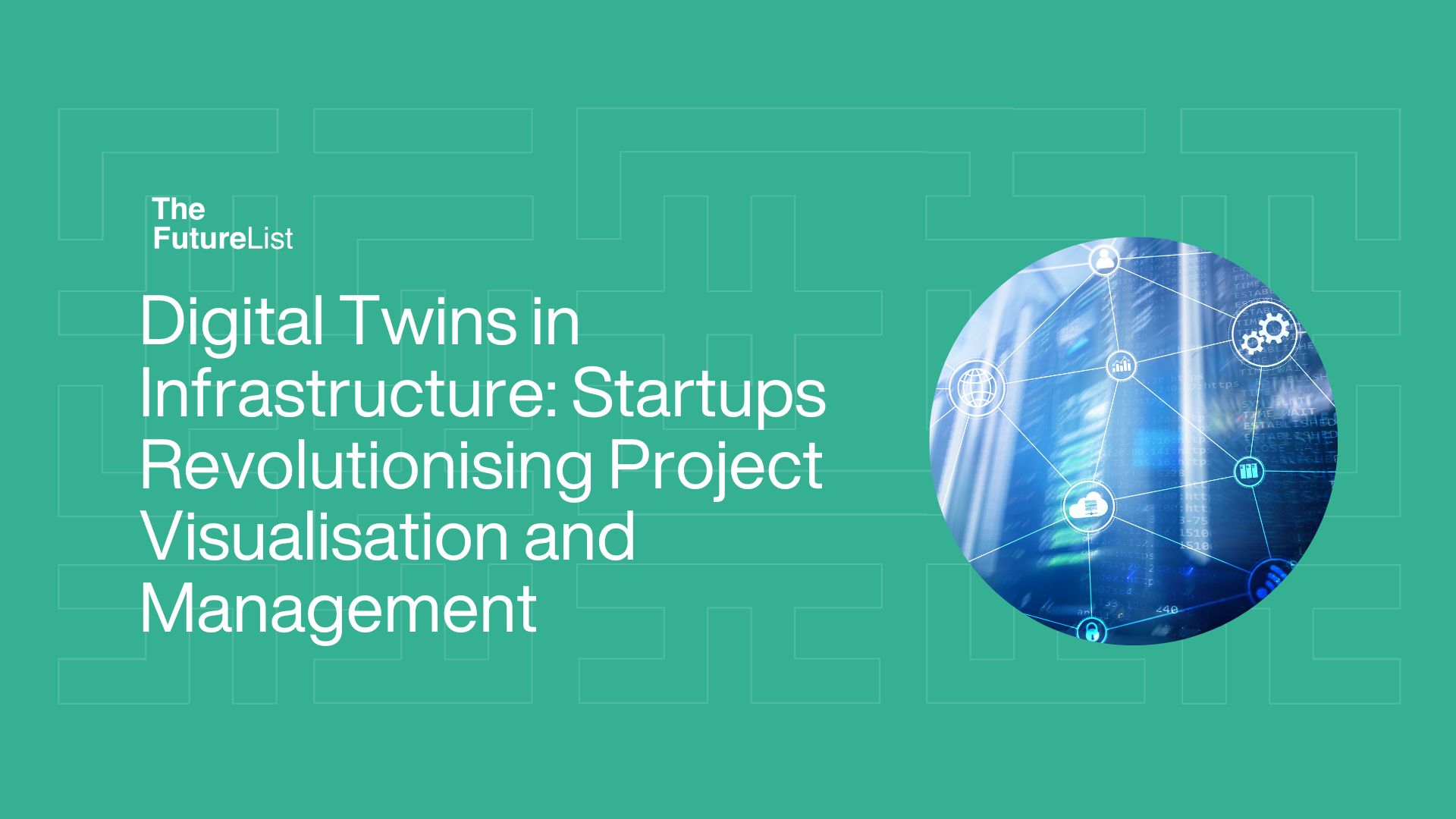
Digital Twins in Infrastructure: Startups Revolutionising Project Visualisation and Management
The emergence of digital twins is driving a revolutionary shift in the field of infrastructure construction. These virtual copies are changing how projects are managed, tracked, and visualised since they precisely replicate real-world assets. Startups are bringing in a new era of efficiency, sustainability, and creativity in the infrastructure space as they adopt this game-changing technology.
These twins provide a thorough understanding of infrastructure assets by seamlessly integrating data from several sources, including sensors, IoT devices, and historical records. They improve performance across the project lifecycle and give stakeholders the ability to navigate complicated projects with never-before-seen clarity. At a compound annual growth rate (CAGR) of 39.8%, the size of the worldwide digital twin market is anticipated to increase from $17.73 billion in 2024 to $259.32 billion by 2032.
This week, we spotlight three companies that are driving innovation in the sector:
cmBuilder.io
cmBuilder.io is a Canadian construction site logistics platform that offers fast and easy cloud-based workflows, powerful sequencing simulation capabilities, and real-time collaboration. The platform enables construction teams to generate a 3D digital twin of their site, upload BIM models, and use massing tools to visualise projects. This allows them to simulate the entire construction process with accurate sequencing.
Andorean:
Andorean, a Mongolian visualisation Platform is a cloud-based solution that integrates visualisation and analytics capabilities to transform point clouds, LiDAR data, and 3D models into interactive 3D and 2D representations. The platform creates a digital twin platform specifically for the mining sector. It makes use of 3D landscape models, point clouds, and light detection and ranging (LiDAR) data. Mine sites become interactive, detailed digital twins as a result. In order to support scenario simulations, environmental monitoring, and data-driven decision-making, the platform also makes use of geographic information systems (GIS) and environmental data.
Automageo:
Automageo is a Brazilian company that has developed the first predictive digital twin platform that can be applied to various industries such as cities, civil defence, energy, telecom, civil construction, agribusiness, and companies. By utilising satellite images and a range of data sources, Automa Geo creates and updates 4D models of areas of interest, allowing for real-time analysis, predictions, and simulations of future scenarios.
Finally, we can say that the introduction of digital twins into infrastructure management is a major step forward in our pursuit of more intelligent, effective, and sustainable growth. Leading this movement are startups that are not just inventors, they are change agents who are fundamentally altering the way we design, build, and care for our physical surroundings.
Get innovation insights from The FutureList weekly. Subscribe to our newsletter here
Categories
- Agritech
- Artificial Intelligence
- Biotech
- Blockchain
- Climate Tech
- Data Infrastructure
- Edtech
- Events
- Fashion
- Fintech
- Healthtech
- Infrastructure
- Innovation Memos
- Innovation Scout Program
- Insight
- Insurtech
- Machine Learning
- Martech
- Mobility
- Music and Media
- Partner Offers
- Perks
- Procurement
- Proptech
- Retailtech
- Ridehailing
- Ridesharing
- Robotics
- Space Aviation
- Supply Chain
- Talent
- Telecoms
- Uncategorized
- Venture Capital
- Wastetech
- Women In Tech
Recent Posts
- How AI Surveillance is Shaping Public Safety in Smart Cities
- Innovation Memo with Zencey: Bringing Equitable Healthcare to Africa
- Inside the Software Model Running Modern Harbours
- The Formula for Future Speed: Data-Driven Performance in Racing
- Leveraging Next-Gen Endoscopic Interventions and Innovations for Healthcare